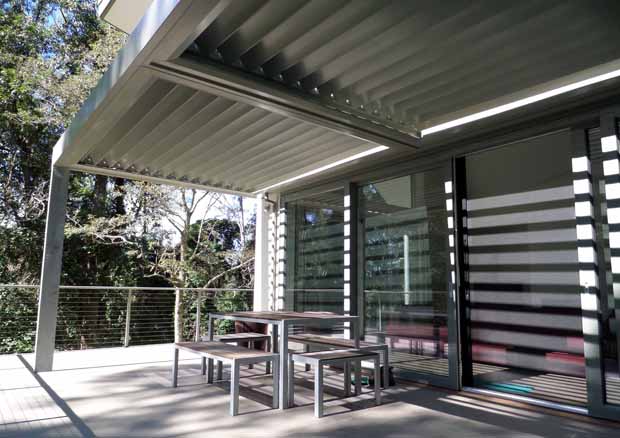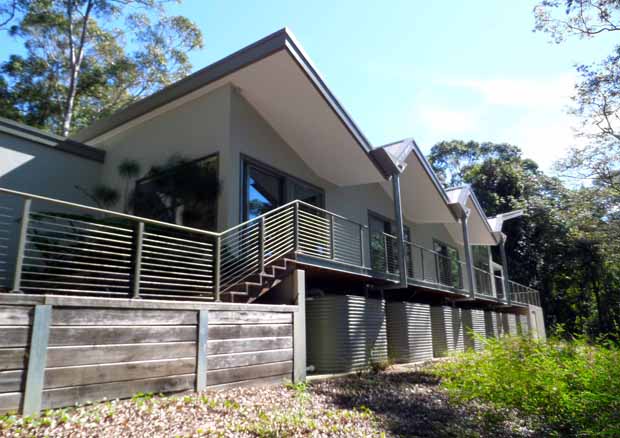Instead of simply using as little energy as possible, the Sutherland Residence stands out because of its aims to provide as much energy as it uses each year.
Home to a family who is interested to live lightly within a beautiful bush environment, the house links internal living with the external environment, but remains unconnected to the town water or sewerage systems.
Tasked with designing a sustainable residence that not only had to be spacious and simple, but also have net zero energy and water consumption, Pidcock Architecture + Sustainability has made use of various design innovations that are suitable for, and considerate of, the site’s location.
The Sutherland house is adjacent to a rainforest categorised as an Endangered Ecological Community, meaning that no trees in the area could be removed. This constrained the footprint of the house, and influenced the thermal modelling and bush-fire modelling of the house.
At the same time, the orientation of the land resulted in a long linear form running north-south, delivering a long eastern, and short northern facades. In response, the architects located the main living rooms to the north, with study and bedrooms along the east.

Presented with these site challenges, the roof was sculpted to provide good orientation, and tilted for the PV panels and solar hot water heater. The tilt also protects the eastern facades and direct rain water to the collection tanks. Meanwhile, the wide roof canopy shades the north and east façade windows to minimise solar gain during the summer.
Continuing with the theme of sustainability, recyclable building practices were employed by the architects for this project. No excavated material was taken off-site, and the top soil and material that was excavated for foundations was reused to make the area level for the wastewater irrigation zone.
Recycled crushed concrete was also used for back-fill behind the retaining walls.
Although the cost of the project was high, reaching the $2 million mark, it was understood by both architects and clients that this was money well spent; an investment into the long-term performance of the building, which will enable a positive and regenerative lifestyle for the occupants well into the future.

South-east corner
INITIATIVES
-
The house has been cut into the slope of the site on the west side, so that it is embedded into the landscape while taking advantage of the insulating properties of the soil
-
The layout has been designed to work with site topography and landscape to ensure good natural ventilation in summer, complemented by ceiling fans in all rooms. It also guarantees optimal solar access to the living and bed rooms, with help from the wide roof canopy
-
High value insulation to external walls with thermal mass, along with double glazed windows and doors, manage energy flows
-
Water is not connected to mains water, nor the main sewerage, with all water use coming from the water harvested on site
-
All materials, selected for their sustainability credentials, have been designed for longevity to extend their lifecycles
-
Various areas, including gas installation and usage, solar hot water, photovoltaics, rainwater, and wastewater treatment, were modelled by Advanced Environmental (Lincolne Scott Australia). This influenced the insulation requirements and glazing specifications used
-
Low or no VOC paints and finishes throughout
-
Food producing gardens including chickens
-
Low flow taps and showers
-
Although the initial aim was for the house to be completely autonomous, relying on a standalone PV system backed by a generator, it was more cost effective to connect it to the grid instead

